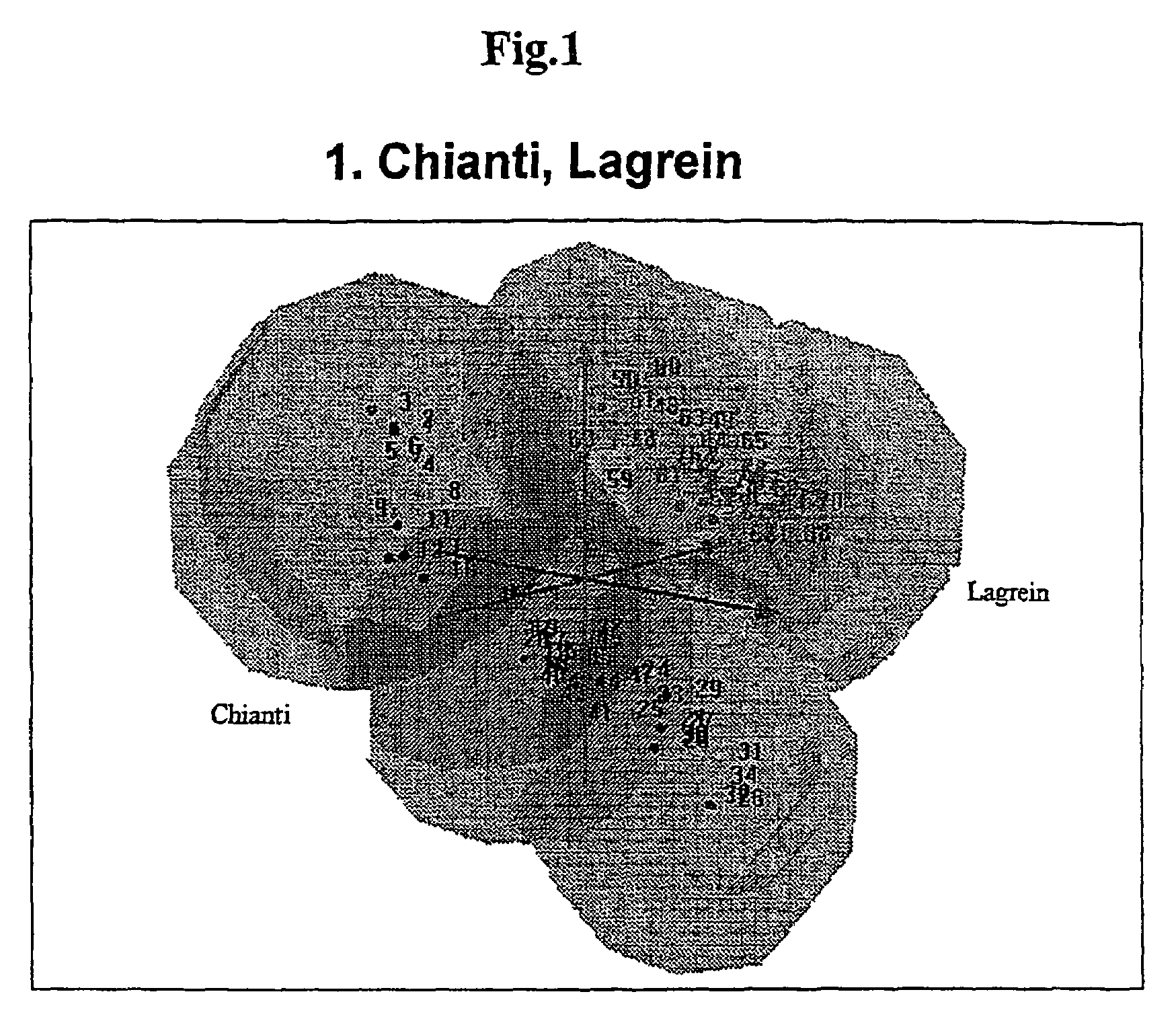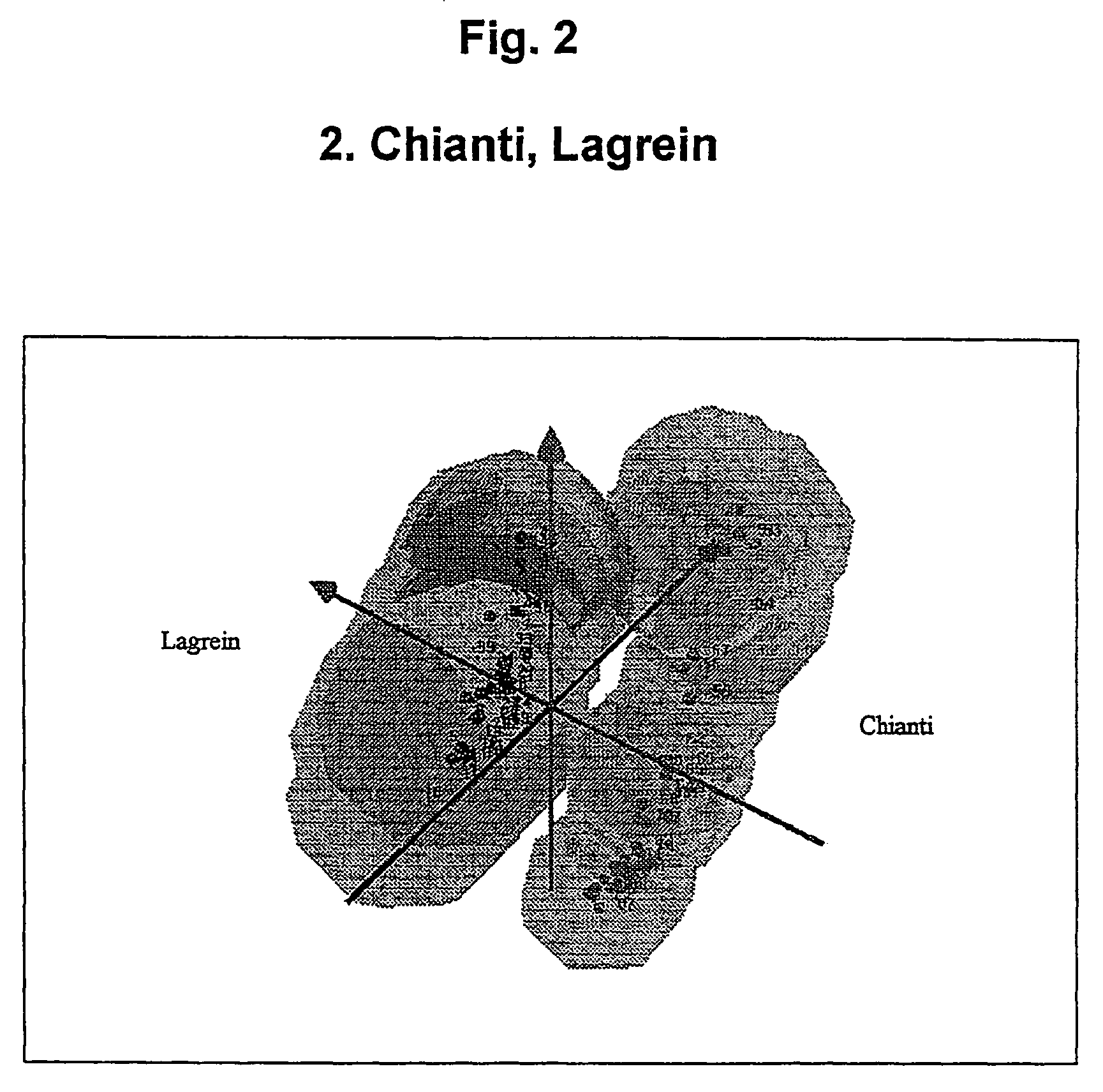Method for classifying wine and coffee
a technology for classifying beverages and coffee, applied in the field of classifying beverages, can solve the problems of limited sensory qualities of only a relatively small number of people, failure to give a reliable statement with the aid of analytical methods,
- Summary
- Abstract
- Description
- Claims
- Application Information
AI Technical Summary
Benefits of technology
Problems solved by technology
Method used
Image
Examples
Embodiment Construction
[0029]By the method of the invention it is possible for the first time to classify a wine sample at least with regard to its associated sort of wine (besides the visually detectable color). As a rule, however, even classifications according to grape, growing region and vintage are possible.
[0030]The expression “class” or “wine class” is understood, for the purposes of the present invention, as a group of wines having defined properties, i.e. class properties, such as, e.g., sort of wine, grape, growing region and vintage.
[0031]Thus, for instance, the wine class “Chianti Antinori 1996” may exhibit the class properties: sort of wine: “red wine, Chianti type”, “grape: main constituent: Sangiovese”, growing region: “South Tyrol”, and vintage “1996.”
[0032]By the method of the invention it was possible by way of example to achieve an unambiguous classification with unknown wine samples for the following wines:[0033]Pure wines: Lagrein and Cabernet: 1997 and 1998 vintages, Laimburg Wine Re...
PUM
| Property | Measurement | Unit |
|---|---|---|
| wavelength range | aaaaa | aaaaa |
| thickness | aaaaa | aaaaa |
| thickness | aaaaa | aaaaa |
Abstract
Description
Claims
Application Information
 Login to View More
Login to View More - R&D
- Intellectual Property
- Life Sciences
- Materials
- Tech Scout
- Unparalleled Data Quality
- Higher Quality Content
- 60% Fewer Hallucinations
Browse by: Latest US Patents, China's latest patents, Technical Efficacy Thesaurus, Application Domain, Technology Topic, Popular Technical Reports.
© 2025 PatSnap. All rights reserved.Legal|Privacy policy|Modern Slavery Act Transparency Statement|Sitemap|About US| Contact US: help@patsnap.com



